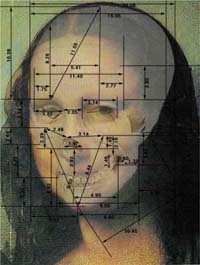
There is a
video called
Cool Salt making the rounds of the Internet science blogs (WARNING: turn the volume on your speakers or headphones down before you play the video. Some of the frequencies will hurt your ears if you don't).
What the video shows are the standing wave patterns produced by exciting an elastic sheet with salt on it using an audio tone generator. The tone generator is then tuned through audible frequencies, pausing at obvious resonant frequencies of the sheet (i.e. frequencies where it produces standing waves determined by the dimensions of the sheet). The salt settles into patterns that help you to visualize the standing waves set up at the resonant frequencies. I read one blog comment by a competent-seeming person that said that the salt settles to the points where the sheet is not displaced at all, but that doesn't sound quite right to me. Maybe I'm missing something, but it seems to me that the salt should settle to the lowest points of the standing wave, which would be a regular pattern of sationary dips. I'll have to give this some more thought (or, even better, just do the experiment in my next lecture on audio). If any of you readers have any additional insight, please post a comment!
This type of demonstration is a classic one used in high school and university physics classes around the world. The study of these patterns can be traced back to Ernst Chladni (a modern founder of the science of acoustics) and his student Hans Jenny, who popularized the study of such patterns in his 1967 book
Cymatics (from the Greek word "kyma" meaning "waves"). "Cymatics" is now the recognized term for the study of wave phenomena.
(Hat tip:
Digg)
(Image Source: a Chladni figure found in the Wiki entry on
Cymatics)
 I recently blogged about microphone array support coming to Windows Vista. Now, here is an array implemented on the other end of the audio chain - not for capture but instead for rendering - Pioneer's surround sound loudspeaker array. The press release bills the PDSP-1 as "the world's first digital sound projector." "Why use an array?", you may ask. The answer is that one loudspeaker array can project multiple beams of sound - in this case the separate channels for 5.1 surround sound - thereby eliminating the need to mount and wire multiple surround sound speakers in your multimedia room.
I recently blogged about microphone array support coming to Windows Vista. Now, here is an array implemented on the other end of the audio chain - not for capture but instead for rendering - Pioneer's surround sound loudspeaker array. The press release bills the PDSP-1 as "the world's first digital sound projector." "Why use an array?", you may ask. The answer is that one loudspeaker array can project multiple beams of sound - in this case the separate channels for 5.1 surround sound - thereby eliminating the need to mount and wire multiple surround sound speakers in your multimedia room.





